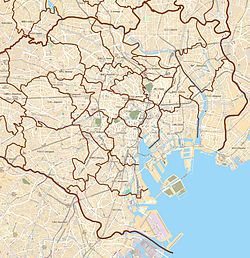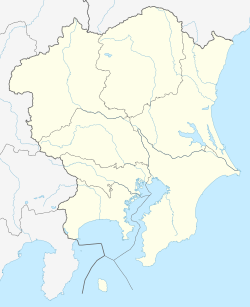Shibuya
渋谷区 | |
|---|---|
| Shibuya City | |
Clockwise from top:
| |
 Location of Shibuya in Tokyo | |
| Coordinates: 35°39′34″N 139°42′02″E / 35.65944°N 139.70056°E | |
| Country | Japan |
| Region | Kantō |
| Prefecture | Tokyo |
| Government | |
| • Mayor | Ken Hasebe (since April 2015) |
| Area | |
| • Total | 15.11 km2 (5.83 sq mi) |
| Population (October 1, 2020[1]) | |
| • Total | 243,883 |
| • Density | 16,140/km2 (41,800/sq mi) |
| Time zone | UTC+9 (Japan Standard Time) |
| Symbols | |
| • Tree | Zelkova serrata |
| • Flower | Iris ensata |
| City office | Shibuya 1-18-21, Shibuya-ku, Tokyo 150-8010 |
| Website | www |
Shibuya (渋谷区, Shibuya-ku, IPA: [ɕibɯja] ) is a special ward in the Tokyo Metropolis, Japan. A major commercial center, Shibuya houses two of the busiest railway stations in the world, Shibuya Station and Shinjuku Station. As of January 1, 2024, Shibuya Ward has an estimated population of 230,609 in 142,443 households[2] and a population density of 15,262.01 people per square kilometre (39,528.4 people/sq mi). The total area is 15.11 km2 (5.83 sq mi). Notable neighborhoods and districts of Shibuya include Harajuku, Ebisu, Omotesandō, Yoyogi and Sendagaya. "Shibuya" is also commonly used to refer to the area surrounding Shibuya Station, an area known as a major center for Japanese fashion and youth culture, and one of Tokyo's most popular nightlife areas.
- ^ "Population by District". Tokyo Statistical Yearbook. Retrieved July 15, 2022.
- ^ "町丁目別世帯数及び人口 | 渋谷区ポータル". Shibuya City Official Website (in Japanese). Retrieved May 7, 2024.









